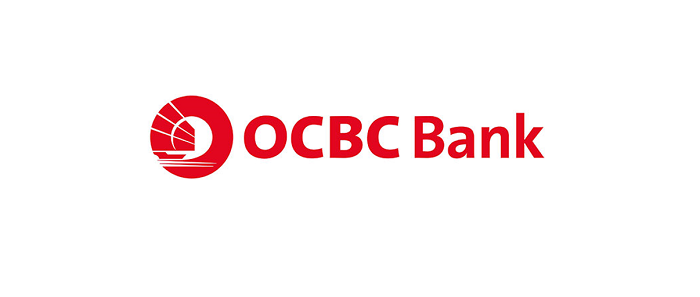
The Positives
+ Net interest income surged 41% YoY. NII grew 41% YoY led by NIM improvement of 55bps YoY to 2.26% despite loan growth remaining flat YoY. NIM expansion was mainly due to the continued and rapid rise in interest rates during the year. However, NII rose only 3% QoQ as NIM declined 4bps QoQ as asset growth was partly offset by the lower NIM as higher funding costs outpaced the rise in loan yields. Nonetheless, OCBC has increased its NIM guidance for FY23e from 2.20% to above 2.20%.
+ Insurance income up 26% YoY. Insurance income grew 26% YoY and 10% QoQ. The growth was mainly attributable to improved investment performance and the adoption of SFRS(I) 17 reporting standard. Total weighted new sales and new business embedded value (NBEV) were S$726mn and S$351mn respectively, while NBEV margin improved to 48.4% (2Q22: 37.1%) due to favourable product mix.
The Negatives
– Fee income declined YoY and QoQ. Fee income declined 10% YoY and 5% QoQ as higher loan-related and investment banking fees were offset by softer wealth management-related fees from a decline in customer activities amid a risk-off investment environment. Nonetheless, the Group’s wealth management income grew 56% YoY to S$1.14bn (2Q22: S$729mn) and contributed 33% to the Group’s total income. OCBC’s wealth management AUM was 10% higher YoY at S$274bn (2Q22: S$250bn) driven by continued net new money inflows.
– Allowances up 250% YoY, credit costs at 31bps. Management set aside 31bps of credit cost for 2Q23 (1Q23: 12bps), the second highest in six quarters, even though asset quality is still benign, with new NPAs during the quarter only at S$289mn (1Q23: S$174mn) and NPL ratio at 1.1%. 2Q23 total allowances rose 250% YoY mainly due to an increase in GPs, which were mainly set aside for changes in risk profiles, macro-economic variables updates and management overlays (40% of GP or ~S$1bn). Notably, rest of the world NPAs rose 84% YoY to S$549mn mainly due to the downgrade of a corporate account in the Commercial Real Estate sector in the US, for which OCBC sees no systemic risk.
– CASA ratio continues to dip. The Current Account Savings Accounts, or CASA ratio, fell 15.6% points YoY to 45.3% due to the high interest rate environment and a move towards fixed deposits, FDs. Nonetheless, total customer deposits increased 7% YoY to S$372bn underpinned by strong growth in FDs. The Group’s funding composition remained stable with customer deposits comprising 79% of total funding.
Outlook
Loan growth: Loan growth was flat YoY in 2Q23, falling below the bank’s guidance for FY23e. However, management said that it expects a slower pace of economic growth and has maintained its guidance of low to mid-single loan growth for FY23e. Management also sees further lending opportunities in the wholesale segment and sustainable financing. Mortgage pipelines in Singapore and Hong Kong are also healthy, with more drawdowns expected in the rest of FY23.
Fee income: With the re-opening of China, OCBC is positive on the broader outlook and expects the re-opening to support China-Southeast Asia trade and investment flows. OCBC has recently launched a private banking unit in Malaysia and mainland China in order to strengthen its WM services while also hiring for the business. We could expect high single-digit fee income growth for FY23e.
Commercial real estate office sector: The commercial real estate office sector loans are mostly to network customers in key markets with a proven track record and financial strength. Overall LTVs are low at around 50% to 60% and are mostly secured. Overall, the commercial real estate office sector loans make up 14% of total loan book, with two-thirds of loans to key markets of Singapore, Malaysia, Indonesia, and Greater China. Loans to developed markets including Australia, the United Kingdom and the United States are largely to network customers with strong sponsors. The US accounted for less than 1% of total Group loans and mostly secured by Class A office properties.
Important Information
This report is prepared and/or distributed by Phillip Securities Research Pte Ltd ("Phillip Securities Research"), which is a holder of a financial adviser’s licence under the Financial Advisers Act, Chapter 110 in Singapore.
By receiving or reading this report, you agree to be bound by the terms and limitations set out below. Any failure to comply with these terms and limitations may constitute a violation of law. This report has been provided to you for personal use only and shall not be reproduced, distributed or published by you in whole or in part, for any purpose. If you have received this report by mistake, please delete or destroy it, and notify the sender immediately.
The information and any analysis, forecasts, projections, expectations and opinions (collectively, the “Research”) contained in this report has been obtained from public sources which Phillip Securities Research believes to be reliable. However, Phillip Securities Research does not make any representation or warranty, express or implied that such information or Research is accurate, complete or appropriate or should be relied upon as such. Any such information or Research contained in this report is subject to change, and Phillip Securities Research shall not have any responsibility to maintain or update the information or Research made available or to supply any corrections, updates or releases in connection therewith.
Any opinions, forecasts, assumptions, estimates, valuations and prices contained in this report are as of the date indicated and are subject to change at any time without prior notice. Past performance of any product referred to in this report is not indicative of future results.
This report does not constitute, and should not be used as a substitute for, tax, legal or investment advice. This report should not be relied upon exclusively or as authoritative, without further being subject to the recipient’s own independent verification and exercise of judgment. The fact that this report has been made available constitutes neither a recommendation to enter into a particular transaction, nor a representation that any product described in this report is suitable or appropriate for the recipient. Recipients should be aware that many of the products, which may be described in this report involve significant risks and may not be suitable for all investors, and that any decision to enter into transactions involving such products should not be made, unless all such risks are understood and an independent determination has been made that such transactions would be appropriate. Any discussion of the risks contained herein with respect to any product should not be considered to be a disclosure of all risks or a complete discussion of such risks.
Nothing in this report shall be construed to be an offer or solicitation for the purchase or sale of any product. Any decision to purchase any product mentioned in this report should take into account existing public information, including any registered prospectus in respect of such product.
Phillip Securities Research, or persons associated with or connected to Phillip Securities Research, including but not limited to its officers, directors, employees or persons involved in the issuance of this report, may provide an array of financial services to a large number of corporations in Singapore and worldwide, including but not limited to commercial / investment banking activities (including sponsorship, financial advisory or underwriting activities), brokerage or securities trading activities. Phillip Securities Research, or persons associated with or connected to Phillip Securities Research, including but not limited to its officers, directors, employees or persons involved in the issuance of this report, may have participated in or invested in transactions with the issuer(s) of the securities mentioned in this report, and may have performed services for or solicited business from such issuers. Additionally, Phillip Securities Research, or persons associated with or connected to Phillip Securities Research, including but not limited to its officers, directors, employees or persons involved in the issuance of this report, may have provided advice or investment services to such companies and investments or related investments, as may be mentioned in this report.
Phillip Securities Research or persons associated with or connected to Phillip Securities Research, including but not limited to its officers, directors, employees or persons involved in the issuance of this report may, from time to time maintain a long or short position in securities referred to herein, or in related futures or options, purchase or sell, make a market in, or engage in any other transaction involving such securities, and earn brokerage or other compensation in respect of the foregoing. Investments will be denominated in various currencies including US dollars and Euro and thus will be subject to any fluctuation in exchange rates between US dollars and Euro or foreign currencies and the currency of your own jurisdiction. Such fluctuations may have an adverse effect on the value, price or income return of the investment.
To the extent permitted by law, Phillip Securities Research, or persons associated with or connected to Phillip Securities Research, including but not limited to its officers, directors, employees or persons involved in the issuance of this report, may at any time engage in any of the above activities as set out above or otherwise hold an interest, whether material or not, in respect of companies and investments or related investments, which may be mentioned in this report. Accordingly, information may be available to Phillip Securities Research, or persons associated with or connected to Phillip Securities Research, including but not limited to its officers, directors, employees or persons involved in the issuance of this report, which is not reflected in this report, and Phillip Securities Research, or persons associated with or connected to Phillip Securities Research, including but not limited to its officers, directors, employees or persons involved in the issuance of this report, may, to the extent permitted by law, have acted upon or used the information prior to or immediately following its publication. Phillip Securities Research, or persons associated with or connected to Phillip Securities Research, including but not limited its officers, directors, employees or persons involved in the issuance of this report, may have issued other material that is inconsistent with, or reach different conclusions from, the contents of this report.
The information, tools and material presented herein are not directed, intended for distribution to or use by, any person or entity in any jurisdiction or country where such distribution, publication, availability or use would be contrary to the applicable law or regulation or which would subject Phillip Securities Research to any registration or licensing or other requirement, or penalty for contravention of such requirements within such jurisdiction.
This report is intended for general circulation only and does not take into account the specific investment objectives, financial situation or particular needs of any particular person. The products mentioned in this report may not be suitable for all investors and a person receiving or reading this report should seek advice from a professional and financial adviser regarding the legal, business, financial, tax and other aspects including the suitability of such products, taking into account the specific investment objectives, financial situation or particular needs of that person, before making a commitment to invest in any of such products.
This report is not intended for distribution, publication to or use by any person in any jurisdiction outside of Singapore or any other jurisdiction as Phillip Securities Research may determine in its absolute discretion.
IMPORTANT DISCLOSURES FOR INCLUDED RESEARCH ANALYSES OR REPORTS OF FOREIGN RESEARCH HOUSE
Where the report contains research analyses or reports from a foreign research house, please note:

Glenn covers the Banking and Finance sector. He has had 3 years of experience as a Credit Analyst in a Bank, where he prepared credit proposals by conducting consistent critical analysis on the business, market, country and financial information. Glenn graduated with a Bachelor of Business Management from the University of Queensland with a double major in International Business and Human Resources.